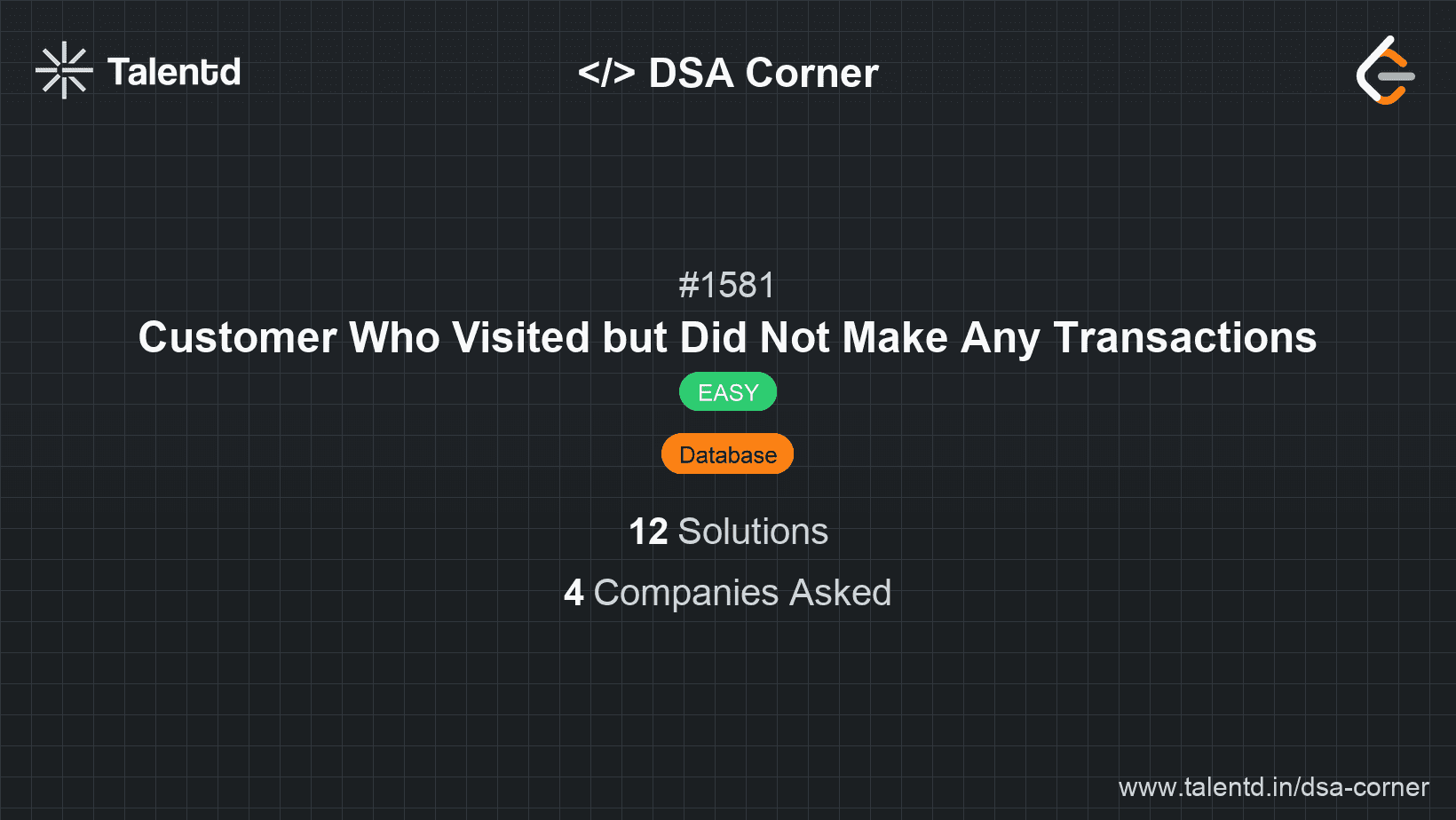
Sponsored
Sponsored
This approach utilizes SQL LEFT JOIN to find all visits that do not have corresponding transactions and GROUP BY to count the occurrences.
Time Complexity: O(N + M), where N is the number of rows in the Visits table and M is the number of rows in the Transactions table.
Space Complexity: O(K), where K is the number of unique customer_id entries in the result set.
1// C++ with a database connection
2#include <iostream>
3#include <string>
4#include <sqlite3.h>
5
6void executeSQL(const std::string &query) {
7 sqlite3 *db;
8 char *zErrMsg = nullptr;
9 int rc;
10
11 rc = sqlite3_open("your_database.db", &db);
12 if(rc) {
13 std::cerr << "Can't open database: " << sqlite3_errmsg(db) << std::endl;
14 return;
15 }
16
17 rc = sqlite3_exec(db, query.c_str(), callback, 0, &zErrMsg);
18 if(rc != SQLITE_OK) {
19 std::cerr << "SQL error: " << zErrMsg << std::endl;
20 sqlite3_free(zErrMsg);
21 }
22 sqlite3_close(db);
23}
24
25int main() {
26 std::string query = "SELECT customer_id, COUNT(visit_id) AS count_no_trans FROM Visits LEFT JOIN Transactions ON Visits.visit_id = Transactions.visit_id WHERE Transactions.transaction_id IS NULL GROUP BY customer_id;";
27 executeSQL(query);
28 return 0;
29}
30
31// Note: Make sure to implement the callback function and handle the database initialization and cleanup properly. The query provided is SQL and should be run on a SQL-compliant database like SQLite3.This solution demonstrates how to use C++ to interact with a SQL database (e.g., SQLite3) to execute a query. The program connects to the database, executes an SQL LEFT JOIN to find visits without transactions, groups the results by customer_id, and counts the visits. It's important to handle database connections and cleanup properly.
This approach uses a subquery with NOT EXISTS to find all visits by customers that do not appear in the Transactions table.
Time Complexity: O(N * M), where N is the number of rows in the Visits table and M is the number of rows in the Transactions table.
Space Complexity: O(K), where K is the number of unique customer_id entries in the result set.
For low-level languages like C, a library such as SQLite3 offers the capability to execute SQL queries. By utilizing subqueries and the NOT EXISTS clause, it's possible to efficiently filter based on the absence of transactions.